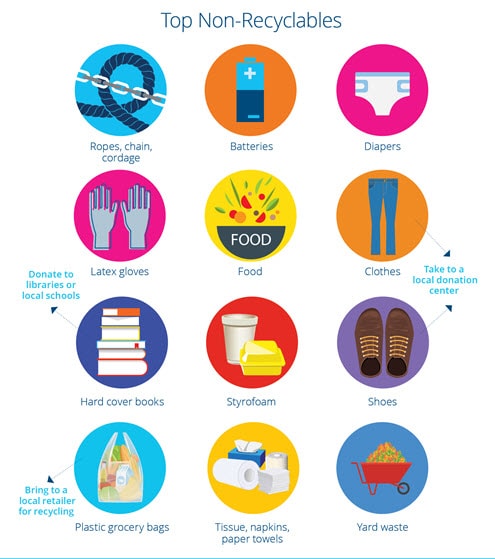
This Earth Day, Let’s Take #1MORE Step to Becoming Better Recyclers
At Republic Services, we believe every day should be Earth Day. And, in celebration of national Earth Day on April 22, we encourage everyone to commit to taking their recycling habits to the next level with #1MORE act of environmental responsibility that helps to reduce contamination of the recycling waste stream.Byline: BTB Editor
April 18, 2018 / Time to read: 5 minAt Republic Services, we believe every day should be Earth Day. And, in celebration of national Earth Day on April 22, we encourage everyone to commit to taking their recycling habits to the next level with #1MORE act of environmental responsibility that helps to reduce contamination of the recycling waste stream.
Recycling contamination can be anything other than what is intended to be collected and recycled, including unwanted substances such as residual food or liquid that can be harmful to the recycling process.
Once a contaminated item, such as a plastic ketchup bottle with remaining contents or a greasy pizza box, comes into contact with other recyclables, such as paper or cardboard, the entire batch can potentially become contaminated and end up in a landfill.
This Earth Day and throughout the year, we encourage everyone to take #1MORE step to help reduce contamination by incorporating four easy tips into your daily routine to help reduce recycling contamination and become better recyclers in the process.
Tip #1: Only Place These Recyclables in the Curbside Recycling Container
Keep it simple and focus on these four categories of curbside recyclables:
- Paper, including newspapers, envelopes, junk mail, phone books and magazines
- Flattened cardboard, file folders, and poster board
- Plastic bottles and containers
- Aluminum and tin food and beverage cans
Composite packaging, such as cardboard and plastic used together in a 24-pack of bottled water where there is a cardboard bottom and shrink-wrapped plastic, cannot be recycled unless they are separated before placing in the recycling container.
Tip #2: Recyclables Should Be Empty, Clean & Dry
Make sure recyclables are empty of any contents, clean of any residue and dry before placing them into the recycling container.
Tip #3: When In Doubt, Throw It Out
Many consumers put items into the recycling container hoping that they are recyclable. Despite these good intentions, some items should not be mixed in with clean recyclables. If questioning whether something is recyclable or not, following the guidance, “When in doubt, throw it out,” by tossing the items into the trash container.
Tip #4: Know What Should Never be Placed in the Curbside Recycling Container
In order for recycling to really work, your curbside recycling container needs to be filled with the right items. Recycling items that are not recyclable could lead to big problems.
Below is a list of items that should never be placed into a curbside recycling container. In some cases, they can be reused, repurposed, donated or disposed of in the trash container.

